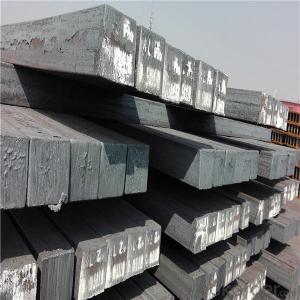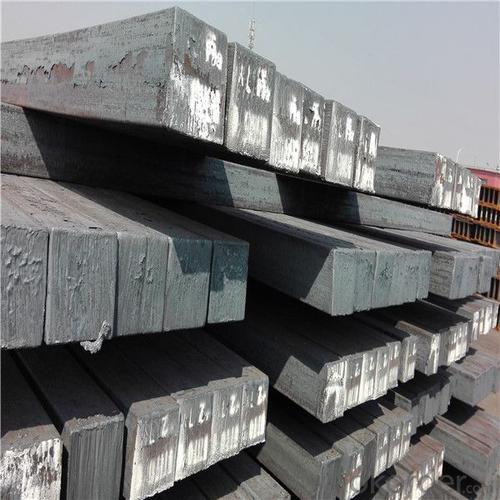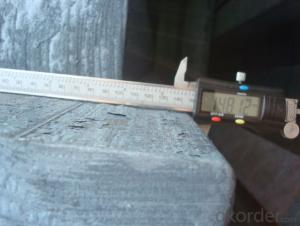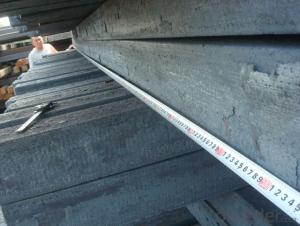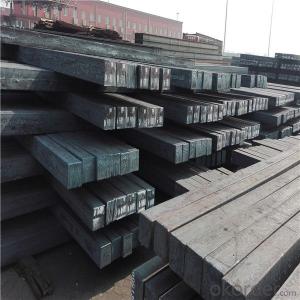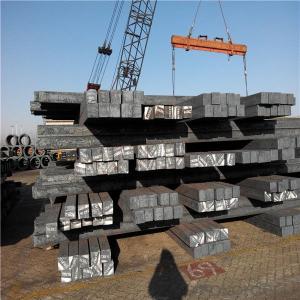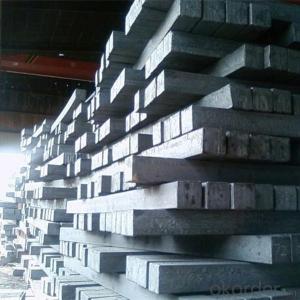Grade Q215 super square steel billet form China
- Loading Port:
- Guangzhou
- Payment Terms:
- TT OR LC
- Min Order Qty:
- 1000 m.t.
- Supply Capability:
- 17172 m.t./month
OKorder Service Pledge
OKorder Financial Service
You Might Also Like
Specification
Billets, or ingots (as they sometimes referred to), are not of practical use until they have been formed
into more functional shapes and sizes. While they have already been put in the furnace, they still
require a series of shaping and molding procedures such as hot and cold working, milling and cutting
before they are sold in hardware stores, or used for different applications. The unformed billets,
however, can be used in striking currency such as coins and as reserves, similar to gold bars.
Qaulity:own factory, stable quality
Tolerance: Strictly according to the G/B and JIS standard
Delivery time: within 45 days after receiving the L/C or advanced T/T payment.
Price term: FOB/CIF/ CFR according to clients requirements
Payment terms: 100%Irrevercable L/C at sight or T/T
Gade:
Standard | C(%) | Mn(%) | S(%) | P(%) | Si(%) |
Q195 | ≤0.12 | ≤0.50 | ≤0.040 | ≤0.035 | ≤0.30 |
Q235 | ≤0.20 | ≤1.40 | ≤0.045 | ≤0.045 | ≤0.35 |
Q275 | ≤0.22 | ≤1.50 | ≤0.045 | ≤0.045 | ≤0.35 |
20MnSi | 0.17-0.25 | 1.2-1.6 | ≤ 0.050 | ≤ 0.050 | 0.40-0.80 |
3SP | 0.14-0.22 | 0.40-0.85 | ≤ 0.050 | ≤ 0.040 | 0.05-0.15 |
5SP | 0.28-0.37 | 0.50-1.00 | ≤ 0.050 | ≤ 0.040 | 0.15-0.30 |
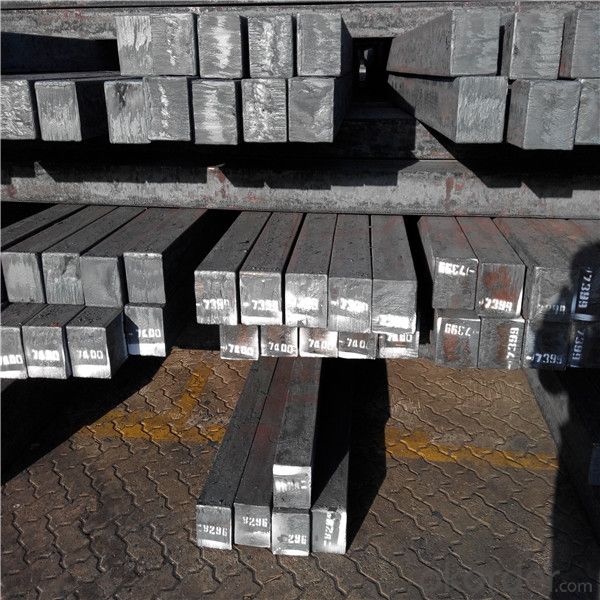

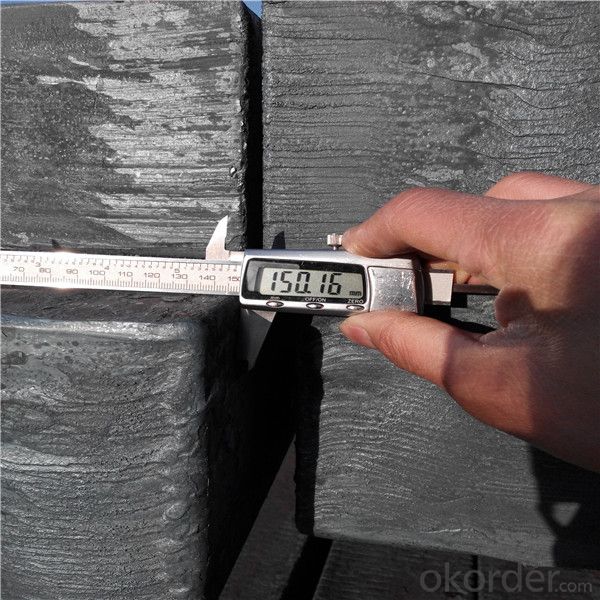
Our service :
We have a plant and professional team to provide our best service, from the start of production until the
loading into the vessel, we have a complete quality follow up procedure, to assure our products arrives to the customer with satisfaction. Welcome new and old customers
to contact us for future business relationships! We will give you a surpise price.
Packing :
Within 30 days
1.Standard export package
2.In bundles with steel strips
3.As the requirements of the customers
FAQ:
Q: What is payment terms?
A: FOB 30% T/T IN ADVANCE AS DEPOSIT AND 70% T/T BEFORE SHIPMENT
CIF and CFR 30% T/T IN ADVANCE AS DEPOSIT AND 70% T/T AS THE COPY OF B/L OR L/C AT SIGHT
Q:How to guarantee the quality of the products?
A:We have established the international advanced quality management system,every link from raw material
to final product we have strict quality test;We resolutely put an end to unqualified products flowing into the market.
At the same time, we will provide necessary follow-up service assurance.
Q:How long can we receive the product after purchase?
A :In the purchase of product within three working days, We will arrange the factory delivery as soon as possible.
The pecific time of receiving is related to the state and position of customers.
- Q: What are the different methods of steel billet inspection?
- There are several different methods of steel billet inspection that are commonly used in the manufacturing industry. These methods are employed to ensure the quality and integrity of the steel billets before they are further processed into various end products. Some of the most common methods of steel billet inspection include: 1. Visual Inspection: This is the simplest and most basic method of inspection, where trained inspectors visually examine the billets for any surface defects, such as cracks, pits, or any other irregularities. This method is typically used as an initial screening process before more advanced inspection techniques are employed. 2. Ultrasonic Testing: Ultrasonic testing utilizes high-frequency sound waves to detect any internal defects or inconsistencies within the steel billets. This method involves the use of a transducer that emits sound waves into the billet, and the reflected waves are analyzed to identify any flaws or abnormalities. Ultrasonic testing is effective in detecting internal defects like voids, inclusions, or cracks. 3. Magnetic Particle Inspection: This method is particularly useful for detecting surface and near-surface defects in steel billets. It involves applying a magnetic field to the billet and then applying iron particles to the surface. The particles will cluster around any magnetic leakage caused by surface cracks or defects, making them easily visible to the inspector. 4. Eddy Current Testing: Eddy current testing is a non-destructive method used to detect surface and near-surface defects in conductive materials, including steel billets. It involves passing an alternating current through a coil, creating an electromagnetic field. Any changes in the electromagnetic field caused by defects in the billet's surface are detected and analyzed, allowing for the identification of flaws. 5. X-ray Inspection: X-ray inspection is a widely used method for inspecting steel billets. It involves passing X-rays through the billet and capturing the resulting image on a film or digital detector. This method is highly effective in detecting both internal and external defects, such as cracks, voids, inclusions, or segregation. These are just a few of the commonly employed methods of steel billet inspection. Each method has its advantages and limitations, and the choice of inspection technique depends on factors such as the type of defect being targeted, the size and shape of the billets, and the specific requirements of the end product. By utilizing a combination of these inspection methods, manufacturers can ensure the quality and reliability of the steel billets they produce.
- Q: Is there an export duty? Or is there a tax refund?
- It's too broad. What kind of material (contains all kinds of metal components in order to confirm HS coding)?
- Q: What are the main differences between hot rolled and cold rolled steel billets?
- The main differences between hot rolled and cold rolled steel billets lie in the manufacturing process and resulting properties. Hot rolled steel billets are created by heating the steel and then rolling it at high temperatures, which leads to a rougher surface finish and less precise dimensions. On the other hand, cold rolled steel billets undergo a process of rolling at room temperature, resulting in a smoother surface finish and tighter dimensional tolerances. Moreover, hot rolled steel billets are generally more ductile and have a higher carbon content, while cold rolled steel billets are typically harder and have improved strength due to the strain hardening during the cold rolling process.
- Q: How are steel billets used in the production of fasteners?
- Steel billets are used in the production of fasteners as they serve as the raw material for manufacturing various types of fasteners such as bolts, screws, and nuts. These billets are heated and then forged or rolled to shape them into the desired fastener form. The resulting fasteners possess high strength and durability, making them suitable for a wide range of applications in industries like construction, automotive, and manufacturing.
- Q: How do steel billets contribute to the overall corrosion protection of a structure?
- Steel billets, classified as semi-finished steel products, play a crucial role in safeguarding structures against corrosion. They contribute to corrosion protection through multiple means: 1. Superior steel composition: Steel billets are crafted from top-notch steel that comprises different alloying elements, like chromium, nickel, and molybdenum. These elements amplify the steel's resistance to rust and corrosion, making it less vulnerable. 2. Protective layering: Steel billets are often coated with protective layers, such as zinc or epoxy coatings. These coatings function as a barrier between the steel surface and the external environment, obstructing moisture, oxygen, and other corrosive substances from reaching the steel and causing corrosion. 3. Enduring strength: Steel billets are renowned for their remarkable strength and durability. When utilized in construction, they provide a robust foundation and structural support. This strength and durability minimize the likelihood of structural damage and corrosion, guaranteeing the stability and longevity of the structure. 4. Welding capability: Steel billets possess exceptional weldability, facilitating easy and efficient joining of steel components during construction. Proper welding techniques and materials can further augment the structure's corrosion resistance by preserving the integrity and continuity of the protective coatings. 5. Maintenance and repair: In the event of damage or corrosion on the structure, steel billets can be readily replaced or repaired. This ensures that the affected area can be rectified without compromising the overall integrity and corrosion protection of the structure. Regular maintenance and repair of steel billets contribute to the long-term corrosion protection of the entire structure. In conclusion, steel billets contribute significantly to the overall corrosion protection of structures through their high-quality composition, protective coatings, durability, weldability, and ease of maintenance and repair. By incorporating steel billets into construction projects, engineers and architects can ensure the longevity, safety, and corrosion resistance of structures in diverse environments.
- Q: What are the main challenges in the supply chain management of steel billets?
- The main challenges in the supply chain management of steel billets include ensuring efficient transportation and logistics, managing inventory levels to avoid stockouts or excess inventory, dealing with fluctuating demand and production uncertainties, maintaining quality standards throughout the supply chain, and effectively collaborating with suppliers and customers to ensure timely delivery and customer satisfaction.
- Q: What are the potential applications of steel billets in the electronics industry?
- The electronics industry can benefit from the potential applications of steel billets. While steel is not traditionally associated with this sector, advancements in technology have allowed for its use in various ways. One potential application is using steel billets to produce electronic enclosures. These enclosures offer superior durability and protection for electronic components. They can withstand harsh environments, provide electromagnetic shielding, and prevent damage from impacts or accidents. Manufacturers have the flexibility to shape and form steel billets into different enclosure designs to meet specific requirements. Another application is in manufacturing connectors and terminals. Steel billets can be machined and formed into intricate shapes and sizes, making them suitable for creating reliable and strong connectors. Steel connectors offer excellent conductivity, ensuring efficient and secure connections between electronic components. Additionally, steel's resistance to corrosion makes it a viable option for connectors exposed to moisture or other harsh conditions. Steel billets can also be used to produce high-strength structural components in electronic devices. These components, such as brackets, frames, or supports, require materials with exceptional strength and rigidity. Steel billets, with their high strength-to-weight ratio, provide the necessary structural integrity and stability. Their robustness ensures the longevity and reliability of electronic devices, especially those subjected to heavy loads or vibrations. Furthermore, steel billets can find applications in manufacturing heat sinks. Heat sinks are crucial for dissipating heat generated by electronic components and preventing overheating. Steel, with its excellent thermal conductivity, efficiently transfers heat away from sensitive electronic parts. By shaping steel billets into heat sink designs, manufacturers can create effective cooling systems that enhance the performance and longevity of electronic devices. In conclusion, steel billets have numerous potential applications in the electronics industry. From electronic enclosures to connectors, structural components, and heat sinks, steel's durability, conductivity, and thermal properties make it a valuable material for electronic device production. As technology continues to advance, the use of steel billets in the electronics industry is expected to expand further, offering more innovative solutions for electronic manufacturers.
- Q: How are steel billets used in the production of building facades?
- Steel billets are an important component in the production of building facades due to their versatility and strength. Building facades are the external covering or cladding of a building, which not only provides an aesthetic appeal but also serves as a protective barrier against external elements. Steel billets, which are semi-finished steel products, are used in the production of building facades in several ways. Firstly, they are often used as the primary material for the structural framework of the facade. Steel billets are known for their high strength-to-weight ratio, making them an ideal choice for supporting the weight of the facade and providing structural stability to the building. Additionally, steel billets can be further processed to create various shapes and profiles required for the design of the facade. These shapes can be formed through processes such as hot rolling, cold rolling, or extrusion, allowing for intricate and customized designs. This flexibility in shaping steel billets enables architects and designers to create unique and aesthetically pleasing facades that enhance the overall appearance of the building. Steel billets are also used in the production of curtain wall systems, which are commonly utilized in modern building facades. Curtain walls are lightweight, non-structural cladding systems that are attached to the building's structural framework. Steel billets are often utilized in the creation of curtain wall support systems, providing the necessary strength and durability to withstand wind loads, seismic forces, and other external pressures. Moreover, steel billets can be coated or treated with various finishes to enhance their corrosion resistance and improve their longevity. These finishes can range from galvanization to powder coating, ensuring that the building facade remains durable and aesthetically appealing over time. In summary, steel billets play a crucial role in the production of building facades by providing strength, flexibility in design, and durability. Their utilization in the structural framework, creation of customized shapes, support systems for curtain walls, and application of protective finishes make them an indispensable material in the construction industry.
- Q: How do steel billets come out?
- I. mining1, iron ore2 limestone mine3, coal mineTwo 、 burden preparation1. Iron ore sintering2 coking coal cokingThree, iron: in the blast furnace, sintering iron ore, limestone, coke, iron ore in the iron elements reduced to metal iron, then the product is pig iron.
- Q: What are the common shipping methods for steel billets?
- The common shipping methods for steel billets include container shipping, bulk shipping, and rail transportation. Container shipping is a popular method for transporting smaller quantities of steel billets. The billets are loaded into standard shipping containers, typically 20 or 40 feet in length, and then shipped via cargo vessels. This method allows for easy handling and ensures the protection of the billets during transit. Bulk shipping is commonly used for larger quantities of steel billets. In this method, the billets are loaded directly onto the cargo vessel without the need for containers. This allows for cost-effective transportation of large volumes of billets. Bulk carriers are specially designed to handle heavy cargo and ensure secure delivery. Rail transportation is another common shipping method for steel billets, especially for domestic or regional transportation. The billets are loaded onto specialized railcars, capable of carrying heavy loads, and transported via rail networks. This method offers efficient and reliable transportation, particularly for shorter distances. Ultimately, the choice of shipping method for steel billets depends on factors such as quantity, destination, cost, and logistical capabilities. Each method has its own advantages and considerations, and it is crucial to select the most suitable option based on the specific requirements of the shipment.
Send your message to us
Grade Q215 super square steel billet form China
- Loading Port:
- Guangzhou
- Payment Terms:
- TT OR LC
- Min Order Qty:
- 1000 m.t.
- Supply Capability:
- 17172 m.t./month
OKorder Service Pledge
OKorder Financial Service
Similar products
Hot products
Hot Searches
Related keywords
